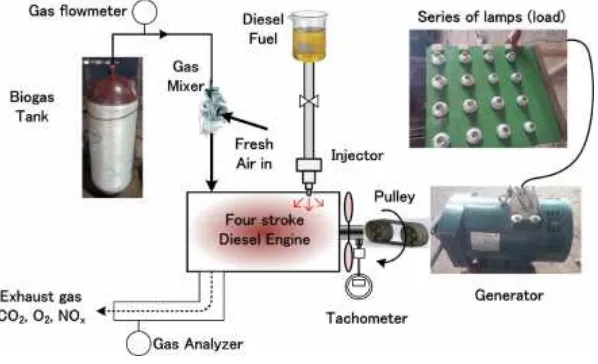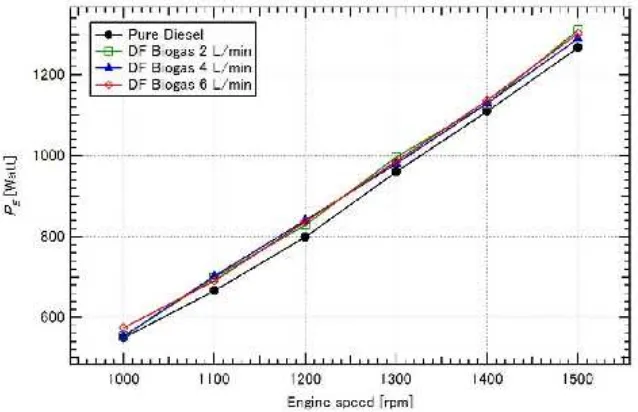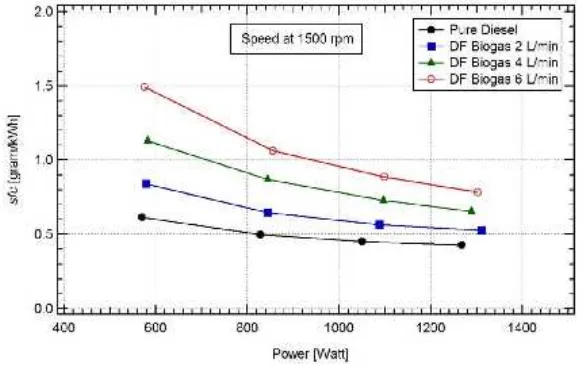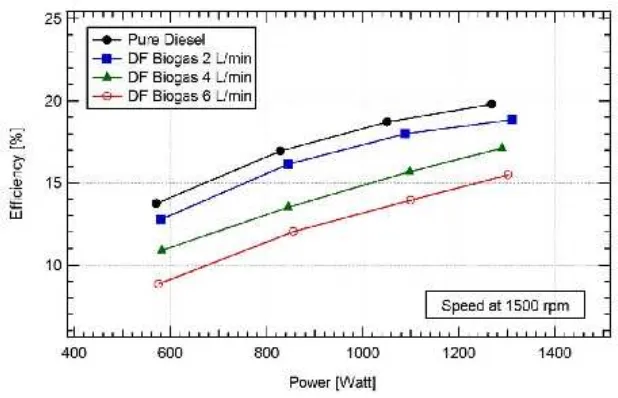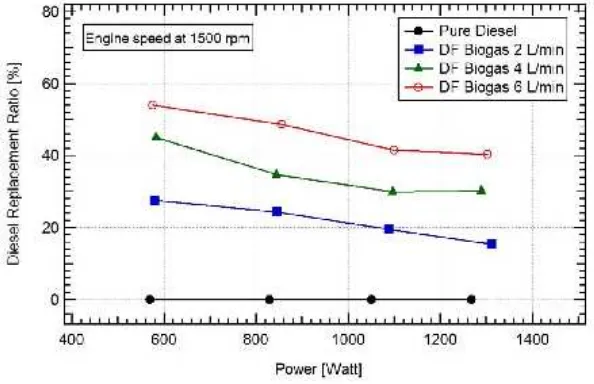All sources 55 Internet sources 34 Own documents 8 Organization archive 12 Plagiarism Prevention Pool 1
1 documents with identical matches
[4]
"17. IOP.pdf" dated 2017-12-07 6.4% 24 matches
1 documents with identical matches
[6]
"16. IOP.pdf" dated 2017-12-07 6.4% 23 matches
1 documents with identical matches
[8] staffnew.uny.ac.id/upload/132243690/pene..._Eng._180_012179.pdf 4.0% 13 matches
[9]
"32. IOP.pdf" dated 2017-12-07 2.7% 7 matches
1 documents with identical matches
[11] https://www.researchgate.net/publication...de_Diesel-Raw_biogas
1 documents with identical matches
[17] "Abdullah_2017_J._Phys.__Conf._Ser._890_012102.pdf" dated 2017-10-12 1.4% 5 matches
[18] https://www.sciencedirect.com/science/article/pii/S0196890409003495 1.3% 3 matches
[19]
"The effect of alkanolamide additio...ot; dated 2017-12-06 1.1% 3 matches
2 documents with identical matches
[22] https://www.researchgate.net/profile/Tb_...iltering-Process.pdf
[25] "Basyuni et al ID 1060.docx" dated 2017-07-10 1.0% 4 matches Results of plagiarism analysis from 2017-12-27 23:54 UTC
1.0% 4 matches
[34] "SEM INTERNATIONAL Biology_2017.doc" dated 2017-09-08 0.9% 2 matches
3 documents with identical matches
[42] https://www.researchgate.net/profile/Ali...diverging-nozzle.pdf 0.6% 2 matches
[43] www.freeinfosociety.com/media/pdf/4439.pdf 0.4% 2 matches
[44] "PB-O-27 Basyuni et al.revised.final.edited.docx" dated 2017-11-06 0.5% 2 matches
[45] "Basyuni et al ID 1061.docx" dated 2017-07-10 0.5% 2 matches
1 documents with identical matches
[51] iopscience.iop.org/article/10.1088/1757-899X/180/1/012167/pdf
[54] "IFRJ 3 b.doc" dated 2017-11-27 0.4% 1 matches
[55] https://www.researchgate.net/publication..._higher_performances 0.4% 2 matches
[56]
"CR-INT036-An Implementation Of Eli...ot; dated 2017-10-08 0.4% 1 matches
1 documents with identical matches
[58] https://vdocuments.site/smart-power-management.html 0.4% 2 matches
[59] "3378-4402-1-RV.pdf" dated 2017-10-29 0.3% 1 matches
0.2% 1 matches
[61] https://www.researchgate.net/publication...al_Setting_to_Sports 0.3% 2 matches
[62]
"3591-5307-1-RV.pdf" dated 2017-11-12 0.3% 1 matches
1 documents with identical matches [64] "Opim -IConICT2017.pdf" dated 2017-09-11
0.3% 1 matches
[65] https://www.sciencedirect.com/science/article/pii/S0960852409009560 0.2% 1 matches
[66] https://www.researchgate.net/publication...mical_techniques.pdf 0.2% 1 matches
[67] https://www.sciencedirect.com/science/article/pii/S0040603198003621 0.1% 1 matches
11 pages, 4241 words PlagLevel: selected / overall
90 matches from 68 sources, of which 39 are online sources. Settings
Data policy: Compare with web sources, Check against my documents, Check against my documents in the organization repository, Check against organization repository, Check against the Plagiarism Prevention Pool
--IOP Conference Series: [0]Materials Science and Engineering
PAPER • OPEN ACCESS
Performance and Emissions of a Small
Compression Ignition Engine Run on Dual-fuel
Mode (Diesel-Raw biogas
)
To cite this article: H Ambarita [4] et al 2017 IOP Conf. Ser.: Mater. Sci. Eng.[4]180 012025
View the article online for updates and enhancements.
Related content [14]
A numerical study on combustion process in a small compression ignition engine run dual-fuel mode (diesel-biogas) H Ambarita, T.I Widodo and D.M Nasution[14] [14]
-Performance of a small compression ignition engine fuelled by liquified petroleum gas
Himsar Ambarita, Eko Yohanes Setyawan, Sibuk Ginting et al.
-[14]
Performance Test on Compression Ignition Engine by Blending Ethanol and Waste Plastic Pyrolysis Oil with Cetane Additive S Padmanabhan, S Ganesan, J Jeswin Arputhabalan et al.
-[4]
Performance and Emissions of a Small Compression Ignition
Engine Run on Dual-fuel Mode (Diesel-Raw biogas)
H Ambarita1*, E P Sinulingga2, M KM Nasution3, H Kawai4
1Sustainable Energy Research Centre, Faculty of Engineering University of Sumatera
Utara, Jl. Almamater Kampus [36] USUMedan 20155, Indonesia
2Electrical Engineering, Faculty of Engineering University of Sumatera Utara, Jl. Almamater Kampus USUMedan 20155, Indonesia
[25]
3Information Technology Department, Fasilkom-TI University of Sumatera Utara, Jl. Universitas Padang Bulan 20155, Indonesia
4Mechanical Engineering, Muroran Institute of Technology, 27-1 Mizumotocho,
Muroran Hokkaido 050-0071, Japan
[0]
Abstract.In this work, a compression ignition (CI) engine is tested in dual-fuel mode (Diesel-[0] respectively. [0]The electric power, specific fuel consumption, thermal efficiency, gas emission, and diesel replacement ratio are analyzed[0]. The results show that there is no significant difference of the power resulted by CI run on dual-fuel mode in comparison with pure diesel mode. [0]However, the specific fuel consumption and efficiencydecrease significantly as biogas
[0] [0]
flow rate increases.On the other hand, emission of the engine on dual-fuel mode is better.The main conclusion can be drawn is that CI engine without significant modification can be operated perfectly in dual-fuel mode and diesel oil consumption can be decreased up to 87.5%.
1. Introduction
In order to avoid the world from the Global Warming, many countries have committed on reducing their Green Houses Gases (GHGs) emissions. The Government of Indonesia (GoI) has released its target on reducing GHG emissions by 26% from level business as usual (BAU) by 2020 and it can be increased up to 41% by international aid [1]. Energy is one of the biggest sectors that contribute to GHGs emissions of Indonesia [2]. This includes activities that burn fossil fuel using engines in order
to produce power. In Indonesia, the main consumption of fossil fuel is diesel oil which is used in Compression Ignition (CI) engines [3]. The CI engines are mainly used in heavy machineries such as truck, agricultural engines, marine, and power plants.[2] Thus, reducing diesel oil consumption will
1
1st Annual Applied Science and Engineering Conference IOP Publishing
IOP Conf. Series:[28]Materials Science and Engineering 180 (201 )7 012025 doi:10.[1088/28] 1757-899X 1/ 80/1/012025
International Conference on Recent Trends in Physics 2016 (ICRTP2016) IOP Publishing
[2]
Journal of Physics:Conference Series 755 755 (2016) 011001 doi:10.[2]1088/1742-6596/755/1/011001
[2]
Content from this work may be used under the terms of the Creative Commons Attribution 3.0 licence.Any further distribution of this work must maintain attribution to the author(s) and the title of the work, journal citation and DOI.
emissions and it will help the GoI in reducing fossil fuel subsidy.
Due to thermodynamic principle of combustion engines and the Carnot cycle limit, the emission
[1]
target can only be achieved with fuel change or blending with biofuel such as biogas. [24B]iogas is produced from anaerobic biodegradation of organic material. It consists of methane typically ranges
from 40-70% and its low heating value is between 15 and 30 MJ/Nm3. There are two methodologies that can be used to run CI engines with biogas.[1Th] e first methodology is converting the CI engine into
Several studies on CI engine run on dual-fuel mode have been found in literature. Bedoya et al [5]
reported a studyon the effect of mixing system and pilot fuel quality on diesel-biogas dual-fuel engine
[46]
performance. The simulated biogas (60% CH4-40%CO2) as primary fuel, and diesel and palm oil biodiesel as pilot fuel. Cacua et al [6][ studied e33] xperimentally the effects of oxygen enriched air on the operation and performance of a diesel-biogas dual-fuel engine. The biogas composition was 60% CH4 - 40% CO2and the oxygen concentration in the intake air engine was varied from 21 to 27% 2. O Tippayong et al [7] carried out a study on electricity production for on-farm using a small CI dual-fuel diesel-biogas.[1]The main objective was to evaluate the effect of long-term operation on performance and wear of the dual-fuel engine. The composition of the biogas was 65.6% CH4and 26.4% CO2. The CI engine was tested for 2000 hours of operation.[1Th] e dual-fuel engine appeared to perform well and have great potential for use on-farm energy utilization. Makareviciene et al [8] explored the impacts of CH4 compositions in a big CI four stoke and four-cylinders engine when operated under dual-fuel biogas-diesel mode. The composition of CH4in biogas varied from 65%, 85%, and 95%.The impact
[32]
of exhaust gas recirculation (EGR) was also explored. Tonkunya and Wongwuttanasatian [9][1reported] a study on the utilization of biogas-diesel mixture as fuel in a fertilizer pelletizing machine for reduction of GHG emission in small farms. In the experiment the rated power of the CI engine and the composition of the biogas were not reported. The results showed that by using biogas as dual-fuel mode in the CI engine, a reduction in diesel fuel of 63% was achieved. This result was equivalent to 13 ton CO2eq/year/farm in Thailand case. Nathan et al [10]performed an experimental study on the
[1]
biogas-biodiesel HCCI mode of engine operation. The objective was to investigate the potential of the HCCI concept to utilize biogas effectively.
The above literatures show that study on CI engine run on dual-fuel mode in order to decrease the fossil fuel has come under scrutiny.[1 Se] veral modifications have been proposed such as the effects of mixing system, oxygen enrichment of the inlet air, compression ratio, long-term operation, etc. In particular, in the remote areas technical support is minimum and only raw biogas is present. In these such areas, the CI engine should be operated with raw biogas without significant modification. To the best knowledge of the author, study on CI engine without modification run on raw biogas has not found in literature.[0]In this study the performance and emission characteristics of a small CI engine run on dual-fuel mode (Diesel-RawBiogas) will be investigated experimentally[0]. The main objectivehere
is to explore the performance characteristics of the CI engineif it is fueled by dual-fuel (Diesel-Raw
Biogas). The results are expected to supply the necessary information on development of alternative solutions for reducing diesel oil consumption in CI engines.
2. Method
In this study a CI engine which is originally used in a small tractor for agricultural will be tested in the
experimental apparatus.[0]The specifications of the CI engine are presented in Table 1. It is a single-[2]
2
1st Annual Applied Science and Engineering Conference IOP Publishing
cylinder four stroke CI engine fueled by diesel oil. This engine has a [0] maximum output power of 4.86 W. It is a small engine with a weight of 60 kg and typically found in Indonesian small farmer.
Table 1. Specification of the CI engine
[1]
2.1. Experimental apparatus
In order to perform the study, an experimental apparatus has been designed and developed as shown in
Figure 1. It consists of a unit of CI engine, generator, [1] series of lamps, biogas tank, gas mixer, and
measurements apparatus. In single fuel mode (pure diesel oil only) the CI engine will be tested without
modification. In dual-fuel mode, a gas mixer has been designed and developed in order to mix the fresh air with biogas. The mixture of the fresh air and biogas will be injected into the CI engine. To
simulate the load, the CI engine will be coupled with a single phase synchronous generator using pulley.
Figure 1. Experimental apparatus
The specifications of the generator are as follows. The rating frequency is 50/60 Hz, Rating Voltage is 115-230, and Maximum power of 3 kVA. The electricity from the generator will be used to light a series of lamps which can be operated at load 600W, 900W, 1200W, and 1500W. A tank is designed and fabricated to store the raw biogas.[35Th] e present biogas is produced from anaerobic biodegradation of Palm oil mill effluent. The effluent is taken from a mill located in Rambutan about 80 km from Medan city and it is operated by PTPN III (state owned plantation III).[1Th] e composition of the resulted biogas is tested by using Gas Chromatography, it consists of CH460% and CO240% of
No Parameter Value
1 Commercial name/model Tiger Diesel Engine R175 AN
2 Number of cylinder/stroke Single-cylinder/4 strokes and
Horizontal
3 Cooling system Air cooled
4 Bore Stroke 75 mm 80 mm
5 Maximum output 4.86 kW
6 Rated output 4.[2]41 kW
7 Rated speed 2600 rpm
8 Engine weight 60 kg
9 Commercial name/model Tiger Diesel Engine R175 AN
3
1st Annual Applied Science and Engineering Conference IOP Publishing
volume. The low heating value (LHV) of the biogas is 17.69 MJ/kg.[1]The diesel oil is purchased from PERTAMINA the government oil retailer in Indonesia[. 1]Before used, the LHV of the diesel oil is
tested. The LHV is 42.64 MJ/kg.
The characteristics of the exhaust gas are measured using engine smoke meter for opacity and gas analyzer for HC and CO.[1]The model of the engine smoke meter is HD-410 with main specifications are as follows. [1]The measuring range, absorption coefficient, oil temperature, and operation
temperature are 0.00-100%, 0.00 - 21.42 m-1, 0 - 800 rpm, 0 - 100oC, and of -10 oC - 40 oC, respectively. The model of Gas Analyzer is HG-510 with specifications measuring range of CO and HC are 0-9.99%and 0-9999 ppm, respectively. The operating temperature, power, and serial number are -10oC - 40oC, 220V, and 2G9C0101, respectively.[1Th] e temperature is measured using thermometer type of KW06-278 Krishbow with an accuracy range of0.5%1oC. The load of electricity is measured using a Multitaster Meter CD800A. The revolution speed of the CI engine is measured using Tachometer.
The experiments are performed in two modes. In the first mode the CI engine is run on pure diesel.
[0] every biogas flowrate the load and the engine speed are varied.[67]The same measurements with the pure
diesel are performed. Thus, a total of 96 experiments have been carried out. Every test is replied for three times and the measurement is averaged.
2.2. Problem formulation
In order to perform the analysis, several parameters are used and formulated here. The objective of introducing biogas into the engine is to reduce the diesel mass flow rate in comparison with single
wheremdiesel (kg/s) is the diesel mass flow rate in diesel mode and mdual (kg/s) is the diesel mass flow rate in dual-fuel mode.
The performance of the engine will be analyzed using the electric power output, efficiency and specific fuel consumption. These parameters are explained as follows. The output power PE (Watt) of the CI engine is calculated by using the following equation
I V
PE (2)
whereV[Volt] and I [Ampere][1]are voltage and currentresulted by the generator, respectively. These
[1]
parameters are measured using the Multitester Meter.Here theefficiency is defined as electric power
resulted divided by total energy input to the CI engine. For diesel operation mode, it is calculated by
The specific fuel consumption sfc[g/kWh] is a comparison of fuel consumption to the useful energy. Here, it can be viewed as how many gram of fuel is needed to result 1 kWh of electrical energy. For diesel operation mode, it can be calculated as:
3 [1] 10 diesel
E m sfc
P
(5)
While for dual-fuel mode it is defined as:
103dual biogas
E
m m
sfc
P
(6)
Using the above formulated parameters, the performance of the CI engine will be analyzed.
[25]
3. Results and Discussions
The results will be discussed in 5 subsections, they are output power, total efficiency, specific fuel consumption, exhaust gas emissions, and diesel replacement ratio
3.1. Output power
Here, the output power is defined as the electric power resulted by the generator. The voltage and the current are measured and the electric power is calculated using equation (1). The electric power as a function of engine rotation speed is shown in Figure 2. The load is fixed at 1500 W. The figure shows that for all cases the output power increases as the engine speed increases. The output power of the CI engine run on dual-fuel is slightly higher than pure diesel at the same speed. The results from other loads show the same trend.[0] It can be said that CI engine can be run on dual-fuel mode perfectly and
shows a better output power in comparison with pure diesel.
Figure 2. Output power of the CI engine at load 1500 W
3.2. Specific fuel consumption
The specific fuel consumptions for pure diesel and dual-fuel mode are calculated using equation (5)
and equation (6), respectively. The specific fuel consumption (sfc) as a function of output power is shown in Fig 3. In this case the engine speed is fixed at 1500 rpm.[2] The specific fuel consumption can
5
1st Annual Applied Science and Engineering Conference IOP Publishing
be viewed as a parameter to show how effective a power generation system to convert an amount of fuel into electrical energy. The lowersfcis the better. Figure 3 shows that, for all cases,sfcdecreases
as power increases. The engine run on pure diesel shows the lowestsfcin comparison with dual-fuel
engine. By injecting biogas to the CI means adding the fuel consumption. As a note, raw biogas is used in the present study, concentration of methane gas, which contain energy, is only 60%.[48]This is the
reason why the specific fuel consumption of the CI engine run on dual-fuel significantly higher than
CI run on pure diesel. In addition, a higher biogas flow rate shows a higher specific fuel consumption.
Figure 3. Power vs specific fuel consumption at constant engine speed 1500 rpm
3.3. Efficiency
As a note, the calculated efficiency in this study is different from thermal efficiency. In the thermal efficiency, the output will be measured as brake power. Here, the efficiency is calculated using the
electric output power from the generator and shown in Figure 4. In general, the figure shows that efficiency increases as engine speed increases. However, at higher speed the increasing rate of
efficiency decreases.[48]This suggests that there will be a maximum efficiency. It can be seen that efficiency for pure diesel always higher than for that engine run on biogas. This is because biogas in the combustion chamber is not burn perfectly.
6
[2]
1st Annual Applied Science and Engineering Conference IOP Publishing
Figure 4. Power vs efficiency at constant engine speed 1500 rpm
There are two main reasons on the lower efficiency of CI engine run on dual-fuel in comparison with it run on diesel only. The first reason is that poorer combustion process and the second one is more energy input within the biogas. In the present biogas there is 40% of CO2. This will decrease the concentration of oxygen which leads to poorer combustion process. Cacua et al [7] suggested that oxygen enriched air will increase efficiency in the CI engine run on dual-fuel.
3.4. Exhaust gas emission
The decreasing efficiency can be explained by examining characteristics of the exhaust gas emission as shown in Table 2. In the table, emissions characteristics for pure diesel and for dual-fuel cases are shown at load 600W and at load 1500W, respectively. As a note opacity number shows opaqueness of the exhaust gas. The highest opacity is shown by IC engine run on pure diesel. The opacity decreases as biogas flow rate increase. The lowest opacity number shown by dual-fuel at biogas flow rate 6L/minute. This is because the biogas has no particulate that can make exhaust gas opaque. In other word, more biogas makes the exhaust gas more clear. The CO number shows the content of CO in the
exhaust gas. A higher CO number means that combustion of fuel in combustion chamber is not
perfect. The lowest CO number is shown by pure diesel fuel. CO number increases as flow rate of biogas increases. The content of CO2in the biogas makes the percentage of O2, which is needed for combustion, decrease. Thus, CI engine run on dual-fuel mode shows a high CO number in the exhaust gas due to the poorer combustion process.[43 C]haracteristics of combustion process in the combustion chamber can be shown by HC number. A high HC number shows that combustion is not perfect. The lowest HC number is shown by CI engine run on pure diesel. HC number increases as flow rate of the biogas increases.[43Th] is is because the combustion process in the combustion chamber is not perfect as the biogas contains CO2. These facts reveal that the present of CO2leads to poorer combustion. This also make the CH4 in combustion chamber becoming less effective. This supports the reason of decreasing efficiency as discussed in the previous subsection.
7
[2]
1st Annual Applied Science and Engineering Conference IOP Publishing
Table 2. Emissions characteristics of the CI engine
Fuel Emission Parameters
OPC [%] CO [%] HC [ppm]
At Load 600 W
Pure Diesel 13.5 0.02 6
DF Biogas 2 L/min 5.1 0.11 200
DF Biogas 4 L/min 8.9 0.15 264
DF Biogas 6 L/min 7.6 0.16 290
At Load 1500 W
Pure Diesel 60.9 0.03 8
DF Biogas 2 L/min 34.5 0.09 117
DF Biogas 4 L/min 32.2 0.12 172
DF Biogas 6 L/min 22.4 0.12 182
3.5. Diesel replacement ratio
The main objective of using biogas in the CI engine is to decrease the diesel consumption by replacing it with biogas. Diesel oil replacement ratio for the CI engine run on dual-fuel at 1500 rpm is shown in Figure 5. The figure shows that the ratio decreases as power increases. This is because at higher output power the injector of the CI engine still supplies more fuel into the combustion chamber. As a note, in this study the injector is not modified to accommodate the energy input from the biogas flow into the combustion chamber. As expected, the higher biogas flow rate results in the higher diesel replacement ratio. In the cases with speed of 1500 rpm, the highest replacement ratio is 69.2% shown by CI engine run on dual-fuel with flow rate 6 L/min. The lowest replacement ratio is 15.2%, shown by biogas flow rate of 2 L/min.
Figure 5. Diesel replacement ratio at 1500 rpm
In order to examine the effect of the engine speed to the replacement ratio, the diesel replacement ratio at engine speed of 1000 rpm is shown in Figure 6. The figure shows the same trend as at engine speed 1500 rpm. However, the diesel replacement ratio at low engine speed is higher than high engine speed. The maximum diesel replacement ratio is 87.5% shown by CI engine on dual-fuel with flow
rate of 6 L/min. The lowest replacement ratio is 36 %, shown by biogas flow rate of 2 L/min.[2]The
8
1st Annual Applied Science and Engineering Conference IOP Publishing
present results show the same trend as results reported by Tippayawong et al [7]. In that study, they used a CI engine with almost similar output rate and the concentration of biogas of 65% CH4which is
slightly higher than this study.[24 It is reported t] hat CI engine operate successfully with biogas substitution rate at above 90% by mass.
Figure 6. Diesel replacement ratio at 1500 rpm
4. Conclusions
A CI engine with rated power of 4.4 kW has been tested on pure diesel and dual-fuel (diesel-raw biogas) modes.[0] The load was varied from 600 W to 1500 W and the engine speed was from 1000 to
1500 rpm. The conclusions are as follows.[1] The CI engine operates successfully on dual-fuel mode
without any significant modification and results in output power similar to original diesel engine.
However, the efficiency and specific fuel consumption are lower in comparison with dual-fuel mode. By using dual-fuel mode with raw biogas, the diesel oil can be replaced up to 87.5%.[60] Further study in
order to increase the efficiency and to decrease specific fuel consumption is extremely needed.
Acknowledgments
[26]
The authors gratefully acknowledge that the present research is supported by Ministry of Research and Technology and Higher Education Republic of Indonesia[. 2]The support is under the research grant B P-PTN USU ofYear 2016.
References
[1] Government of Indonesia Presidential Decree No No 61 Year 2011, National Action Plan For Reducing Greenhouse Gas Emissions.
[0]
[2] Minister of Energy and Mineral Resources, 2011, Handbook of Energy and Economic Statistics of Indonesia, 2011.
[1]
[3] Hutapea M, 2012 Reviewing opportunities for bio-energy and waste to energy development in Indonesia, Ministry of Energy and Minereal Resoruces of Indonesia.
[4] Henham A, Makkar MK, 1998 Energy Conversion Management 39, 2001-2009.
[5] Bedoya ID, Saxena S, Cadavid FJ, Dibble RW, Wissink M 2012 Applied Energy 618-629.
9
[2]
1st Annual Applied Science and Engineering Conference IOP Publishing
[6] Cacua K, Amell A, Cadavid F 2012 Biomass and Bioenergy 45 (2) 159-167.
[7] Tippayawong N, Promwungkwa P, Rerkkriangkrai 2007 Biosystem Engineering 98 26-32. [8] Makareviciene V, Sendzikiene E., Pukalskas S, Rimkus A, Vegneris R 2013 Energy Conversion
and Management 75 224 – 233.
[9] Tonkunya N, Wongwuttanasatian T 2013 Energy for Sustainable Development 17 240 – 244.
[10] Nathan SS, Mallikarjuna JM, Ramesh A 2010 Energy Conversion and Management 51 1347 –
1353.
10
1st Annual Applied Science and Engineering Conference IOP Publishing
